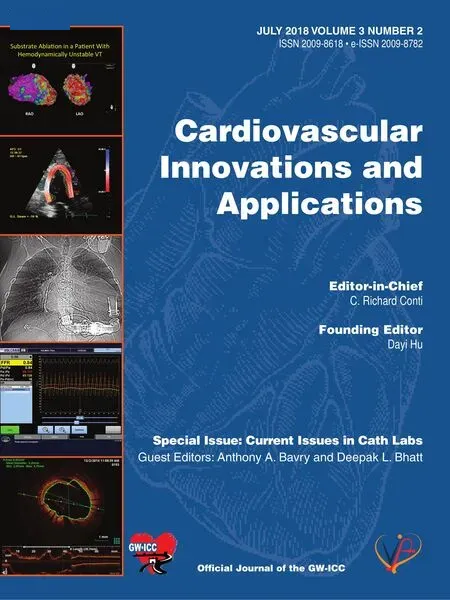Ventricular Function
C. Richard Conti, MD, MACC
Introduction
The role of left ventriculography has evolved radically over the last half-century, but has received little notice in the academic literature. The technique and frequency of use of left ventriculography vary across regions of the United States, institutions, and individuals.
This reflects the lack of guidelines regarding its optimal use. The recommendations by The Society for Cardiovascular Angiography and Interventions(SCAI) are based on the consensus of a writing group and would be level of evidence C if they were formal guidelines. They should be tested for accuracy by clinical research studies. Until clinical research studies are performed, the writing group believes that adoption of the recommendations will lead to a more standardized application of ventriculography and improve the quality of care provided to cardiac patients.
My Opinion aboutLHC Ventriculography
In my opinion and the opinion of many others, left ventriculography is an integral part of the coronary arteriography study since it provides data on wall motion, volume, ejection fraction, chamber size, valvular regurgitation and prediction of the long-term outcome of patients with coronary artery disease. It is the only method to evaluate LVEDP,and LV systolic pressure. LV angiography can also identify regional LV wall motion abnormalities consistent with abnormalities found in the epicardial coronaries and coronary microcirculation. In addition, Ventricular Thrombus, Aneurysms, and Ventricular Septal Defects (the latter are best seen in the LAO projection on left ventriculography) can be seen. All of these can be missed on noncontrast transthoracic echo. Ventriulography can estimate myocardial viability by comparing a baseline cardiac cycle to one that follows a PVC, infusion of an inotrope, or by decreasing ischemia with Glyceryl trinitrate infusion.
Absence of Guidelines
There are no specific guidelines, from ACC, AHA,ESC or SCAI for the performance of left ventriculography at the time of coronary angiography or left heart catheterization.
Limitations of Catheter based LV Angiography
1. Invasive Procedure
2. Radiation exposurecan be increased by Left Ventriculography by up to 30%.
3. Contrast-induced AKI,defined as a rise in serum creatinine of 0.3 meq/L is increased in patients with chronic kidney disease, hypotension, anemia, and heart failure. This rise in serum creatinine rarely results in the need for dialysis.
Estimated cost of catheter based left ventriculography at the time of LHC vs. an independent TTE
– $91 vs. $189.
SCAI Main Recommendation
The Society of Cardiovascular Angiography and Interventions (SCAI) suggests that we develop local criteria for performance of left ventriculography and work to decrease variation in its performance among operators within individual catheterization laboratories.
Ventricular Function Determined by Cardiac Ultrasound
There is no doubt that trans thoracic echo (TTE)can evaluate left ventricular (LV) size, myocardial wall motion, and wall thickening similar to catheter based ventriculography. Most echo parameters are commonly reported as normal, hyperdynamic,or depressed. Depressed function can be global or regional. When used in clinical practice, LVEF by 2D echo visual estimation represents one of the most common methods used in each of a 16 segment model of the heart.
Advantages:
1. TTE is noninvasive
2. Readily available
3. Relatively inexpensive
4. Portable
5. Easily repeated
6. No radiation exposure
7. Can assess LV function serially.
Limitation:
1. Poor acoustic windows due to body habitus (e.g.,lung disease, pectus excavatum, and obesity).
2. Quantitation studies have shown that quantitative assessment of LV function by 2D TTE is suboptimal in up to 20% of patients.
3. 2D TTE is highly operator dependent and is usually performed by a sonographer, who does not know the patient’s physiology or anatomy,not by a physician who knows the history and the state of the coronary artery pathology.
4. Measurements seem to be less accurate in patients with regional systolic dysfunction, compared to global dysfunction.
5. Imaging planes that are foreshortened in patients with limited acoustic windows, may result in incorrect measurements.
Conclusion
All things considered, I favor catheter based angiography done at the time of LHC unless there is serious contraindication to use of contrast. This should be reported in the Cath Lab document by the operator.If echo is used to assess LV function, then the operator should be aware of the quality of the echo and the findings of ventricular function before the patient leaves the Catheter Lab. The problem with both methods is quantitation and inter observer variations.
Questions That Remain
1. Why is there so much difference in the performance of LV angiography at the time of the cardiac cauterization?
2. Why is there no evaluation of LV function in several cases?
3. Of the patients who had an echo done and no LV gram, was the echo acceptable to evaluate LV function and documented in the Cath Lab report?
4. Of the patients who had an echo performed to evaluate LV function was the echo performed,before, during or after the coronary angiogram,and documented in the Cath Lab report.
5. Was the LV echo compared to the known Coronary artery disease distribution of LV dysfunction and documented in the Cath Lab report?
6. How often do patients have poor acoustic windows on TTE?
7. How often is contrast necessary to determine LV function by ECHO?
8. How often is creatinine elevated after contrast?
9. Has increased fluro time ever resulted in skin burns?
10. How often has an invasive procedure resulted in a vascular complication?
 Cardiovascular Innovations and Applications2018年3期
Cardiovascular Innovations and Applications2018年3期
- Cardiovascular Innovations and Applications的其它文章
- Cardiovascular Innovations and Applications
- The Contemporary Role of Femoral Artery Access
- Persisting Angina after Successful Surgical Removal of a Large Coronary Artery Aneurysm Attached to the Proximal Portion of the Left Circumflex Artery: Role of Coronary Artery Spasm
- Speckle Tracking Echocardiography ldentifies lmpaired Longitudinal Strain as a Common Deficit in Various Cardiac Diseases
- Bioresorbable Vascular Scaffold in the Midportion of the Left Anterior Descending Artery for Cardiac Allograft Vasculopathy in a Cardiac Transplant Patient
- The Use of Direct Oral Anticoagulants for Prevention of Stroke and Systemic Embolic Events in East Asian Patients with Nonvalvular Atrial Fibrillation
